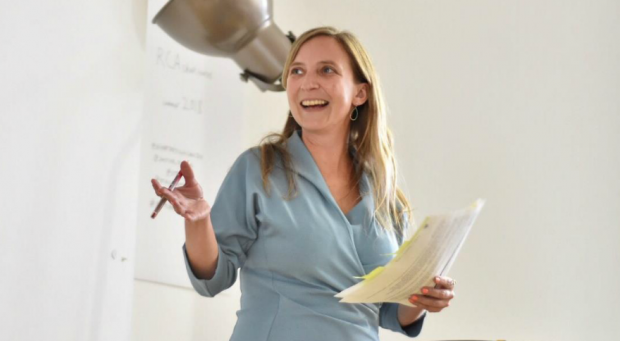Design sprints are a methodology pioneered by Google to tackle difficult ‘digital’ problems. The main idea is to bring people together from different disciplines and intensively facilitate them through a process to draw out new and innovative ideas.
We were keen to explore how we could make this work for government, and to explore how this ‘digital’ problem-solving technique could help us tackle something as complex and challenging as child sexual exploitation.

“Success is 99% failure” - why choose a design sprint to solve a policy challenge?
In the Ministry of Justice, we passionately believe that government has an obligation to explore new ways of working in order to deliver more effective solutions. So, it’s important that we experiment with new approaches so that we can produce new and surprising results, and sometimes fail - As Soichiro Honda, the founder of the Honda Motor Company, said, “success is 99% failure.”
This is especially true because the types of problems we’re solving are hugely complex. We’re not just trying to sell more bottles of fizzy water than the next guy, we’re trying to tackle huge societal issues like child sexual exploitation, reforming offenders, and supporting victims. To do this, we need to draw upon expertise that sits inside and outside government, across different specialists and involving people with different experiences.
Design thinking and the design sprint is a brilliant methodology to start to do this. We’ve found that it breaks down barriers, removes hierarchy and eradicates all of the bureaucracy around ‘getting something done’.
“Inspired by ‘The Fix”
Design sprints and the idea of ‘open policy making’ aren’t new. We’ve been inspired by the Fix and #OneTeamGov who are connecting people and showcasing how design thinking can solve complex challenges. That’s why, when Design Thinkers Academy and What Design Can Do approached us to run a collaborative design sprint about a topic we really cared about, we jumped at the chance. When the Royal College of Art said we could use their space as long as we allowed their students to get involved, we were overjoyed.
What’s involved?
Running a design sprint isn’t easy. It took us 2 months to prepare for a three and a half day sprint.
A design sprint starts with the research. Good outputs are built on having great research for participants to work from. Teams then come together to tackle a specific brief. They speak to experts and build prototypes in a very short amount of time, all the time refining their idea and the scope of their brief.
At the end of the sprint there’s a ‘judging panel’ where the best ideas are chosen by a group of experts.
We learned that while it can be labour intensive, people were willing to give their time and effort to help solve a genuinely ‘wicked problem’. As Jelena, a policy lead for victims here in the Ministry of Justice said, we learned that “government does not have a monopoly on caring”.
You can watch this video to find out what it’s like to participate in a design sprint.
What’s next?
Of course, it has its limitations. It can be difficult to tackle a dark topic such as child sexual exploitation through a creative process like a design sprint. In addition, the method has become notorious for not actually leading to practical implementation.
Wary of this, and keen to make a difference in this space, we’re supporting the Royal College of Art students who are continuing to develop the sprint outputs as part of their final year project. Their ideas will be presented at an international conference in Rotterdam this November alongside international teams who have also contributed to the global challenge.
I want to run a ‘Policy Design Sprint’ too!
Design Sprints are a fantastic way to build a genuinely collaborative team around a complex challenge. It’s important we do this regularly in order to bring new perspectives and build partnerships that enable us to solve these challenges. By the end of our sprint, our teams were exhausted but really pleased with how far they’d come.
If you want to get further insight into Design Sprints, read Design Thinkers Accademy's article, or check out this post from the guys who wrote the book (literally) on Design Sprints.
Check out the ‘The Fix’, a BBC programme that showcases how powerful a design thinking methodology can be when applied to difficult social problems.
Also have a look at the #OneTeamGov movement, which is committed to bringing together people from inside and outside government in order to reform the way we solve problems.
And if you want to hear what the MOJ is doing to transform the way we solve problems in government, please get in touch!
Huge thanks to the following partners we worked with on this project:
- What Design Can Do
- Design Thinkers Academy
- StBy
- Royal College of Art and the students
- Faststream volunteers
